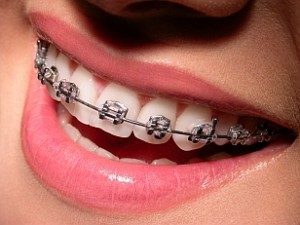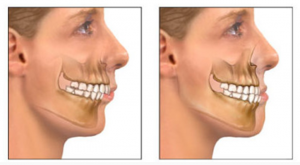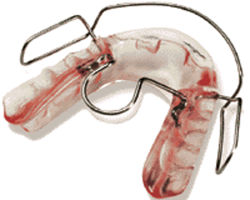Back bite

Over 80% of the world's population has bite problems.
But this does not mean that everyone needs to undergo mandatory treatment at the orthodontist.
A bite is a feature of closing teeth when the lower jaw is stationary.
A bite of the teeth may be physiological or correct and irregular or pathological.
- With a proper bite, the upper incisors of the dentition overlap the lower ones by no more than a third of their crown part.
- Lateral upper teeth slightly cover lower ones.
- In addition, all the teeth on the jaw are located and are closely adjacent to each other and there are no gaps between them.
Unfortunately, normal closure of teeth is very rare in humans.
Types of malocclusion

There are multilevel anomalies: some of them stand out at the level of the teeth, the other part of the pathological bite - at the level of the dentition, and the third - of the jaw.
- The first group of anomalies includes a change in the shape and position of individual teeth, as well as a change in their number.
- The second group of malocclusion is associated with an increase or decrease in dentition.
- And the last - the most complex type of anomaly - a change in the size of the jaws and their position in relation to each other.
Different types of pathologies can also differ in the following parameters: the location of the bite deformation, the shape and degree of curvature.
An important point in the diagnosis is to identify the causes and factors that contributed to the development of pathological bite.
The main anomalies of jaw closure:
- The mesial (medial) type of bite is characterized by the advancement of the lower jaw, while the upper teeth overlap the lower. This type of anomaly is also called reverse bite of teeth or lower prognathia.
- Prognathic (distal) bite - observed with underdevelopment of the lower jaw or enhanced development of the upper.
- Deep bite of teeth, in which the upper incisors overlap the incisors of the lower jaw by more than half. The anomaly was called "traumatic bite."
- With an open bite, there is no closure of most of the front or posterior teeth.
- Cross bite is a pathology in which underdevelopment of one or both sides of the upper or lower jaw is noted, and the dentitions intersect like scissors. Another name for the pathology is “scissor bite”.
- A decreasing bite is formed as a result of erasing teeth or in their absence.
How to fix a back bite in a child
The choice of anomaly correction technique depends on the type of pathology and on the age of the patient.

In children, bone tissue is softer and more flexible than adults, which makes it easy to correct not only the movement of teeth, but also the positioning of the jaws in relation to each other.
- In childhood, correction of malocclusion is carried out using removable structures (pictured) - plates or trainers. The designs mechanically move the teeth and stimulate the growth of the jaw bones.
- In adults and adolescents, pathology is corrected using cap-eliners and bracket systems.
When a defect is associated with the size and location of the jaw bones, they often resort to orthognathic surgery, with which you can radically change both the location and size of the jaw.
The causes of the development of the defect
Among the causes of reverse bite, both congenital and acquired are distinguished.
Congenital, such as a change in the size of the jaw, are transmitted genetically.
Acquired reasons include:
- The presence of bad habits in a child, for example, prolonged use of a dummy, sucking fingers, which can provoke the development of an open bite.
- Anomaly of closure of teeth can form in the presence of chronic respiratory diseases.
- In an adult, the cause of malocclusion can be injuries, lack of teeth, untimely or improper prosthetics. As a result, the position of the dentition and jaw may change.
- The presence of a constant stressful state can cause bruxism (grinding of teeth at night), which leads to increased tooth erasure. As a result of the load on the supporting apparatus of the teeth, their displacement can occur.
Complications
Any kind of malocclusion can cause health problems.
- Digestive system diseases. The reason is insufficient chewing of food, as a result of which, large food particles enter the digestive tract. Of particular danger is an open bite, because with serious anomalies, there is practically no chewing function.
- The presence of problems with the teeth, due to the uneven distribution of the load on them, which can lead to the early development of periodontal disease.
- The development of the pathology of the temporomandibular joint. With this disease, pain is observed when chewing and opening the mouth, the presence of clicks and headaches.
- With some types of pathology, soft tissue injury and ulceration can occur.
- The presence of an aesthetic problem as a result of a change in the profile of the face. The presence of bent teeth, difficulty in speech and breathing may be noted.